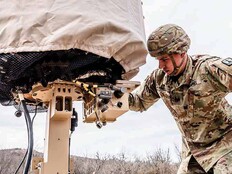Agencies Have Several Paths to Improving Interoperability
Agencies should begin by addressing the limitations posed by disparate communication platforms, inconsistent document collaboration tools and varying recordkeeping policies. The need for common technology tools is not just a recommendation; it’s an urgent requirement to ensure agencies can effectively meet their missions and improve the overall citizen experience.
One of the significant barriers that agencies face is the lack of standardized collaboration tools. Over the years, agencies have operated within siloed environments, each adopting niche collaboration platforms that are often incompatible with one another. This has led to a fragmented technology landscape, hindering interagency communication and collaboration.
For instance, the Department of Defense has struggled with ensuring interoperability among different vendors’ platforms. The Joint Interoperability Test Command has played a crucial role in standardizing these platforms within DOD, ensuring that agencies can communicate effectively, regardless of the technology they use.
The COVID-19 pandemic accelerated the need for a more unified approach to collaboration, and as agencies transitioned to remote work, the limitations of traditional videoconferencing tools became evident. Microsoft Teams emerged as a preferred solution, but it introduced a new set of challenges.
EXPLORE: EPA is leading the government’s shift to softphones.
Many agencies have found that their existing conferencing equipment is not compatible with Teams, requiring a retrofit or the introduction of a third-party solution to bridge the gap. This “second phase of interoperability” requires agencies to not only adapt to new technology but also integrate it with legacy systems.
Original equipment manufacturers and agencies alike should strive to build on top of the decades of interoperability developed in conjunction with organizations like DOD’s JITC, rather than running back to a siloed approach to collaboration.
Understanding the specific needs of each agency is critical to this process. Agencies operate in diverse environments, from tactical settings at the edge of the network to executive offices in Washington, D.C. Each environment presents unique challenges that require tailored solutions.
At the tactical edge, where bandwidth and security constraints are paramount, agencies might deploy minimal equipment with highly specialized configurations. Conversely, retrofitting conference rooms across multiple locations might involve standardizing technology stacks to ensure uniformity and ease of use.
Industry Partners Can Help Agencies Avoid an IT Overhaul
The adoption of third-party solutions has become a viable option for agencies looking to fill the gaps in their collaboration tools.
When agencies need to integrate existing equipment with platforms such as Teams, third-party solutions offer the necessary interoperability — without requiring a complete overhaul of existing IT infrastructure. This approach is particularly beneficial for agencies operating with tight budgets, as it allows them to maximize the use of their current technology while introducing new capabilities.
MORE FROM FEDTECH: It’s time for agencies to get serious about their hybrid cloud strategies.
In addition to internal collaboration, there is a growing emphasis on how agencies interact with the public. The OMB report underscored the importance of improving the way agencies engage with citizens, whether through online services, contact centers or other digital platforms. This shift is likely to transform the government’s approach to customer service, moving beyond traditional methods such as phone calls and in-person visits to more modern, digital-first interactions.
The adoption of cloud-based contact centers is one area where this transformation is already taking place. Some civilian agencies have begun integrating basic chat interfaces, allowing citizens to interact with live agents or artificial intelligence-powered bots for quick, efficient service. This trend, already prevalent in state and local governments, is expected to gain momentum across federal agencies in the coming years.











